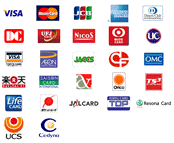This chapter explains how to develop a DUA to access administrative data from a research project. The chapter documents the specific issues to be considered when drawing up an agreement and refers to useful templates and guides. Both sides should consider what is possible and what is likely in terms of the timeframe that the agreement will cover. This includes when the data can be delivered, how the data is extracted from the management systems and the costs that may arise during the term of the data exchange agreement. Negotiation of agreements can take up to a year between development and execution, especially if there is no history of data exchange between the two parties. Even organizations with previous data sharing relationships or established processes can have a request queue, which can lead to delays. After reaching a signed agreement, researchers must anticipate the time between approval and delivery: the processes to meet demand can be intense. For example, data providers need time to document and format the requested data, and additional time may be required to retrieve data from multiple databases or inactive storage. This process can be particularly lengthy if the application is new. Data providers may also require notification or approval before publishing publications or publications. In order to improve consumers` control over the data they share with financial applications (applications) and to provide a safer and more secure way to facilitate these exchanges, the Connected Banking initiative of the Clearing House Payments Company (TCH) focuses on improving the capacity of data providers (e.B.
banks) and recipients of data (e.B, data aggregators or fintechs) to establish secure direct connections via application programming interfaces (or APIs). Unfortunately, legal agreements between banks and fintechs have sometimes taken 12 months or more to develop and complete, and have become a significant bottleneck for API adoption. Data includes information directly from administrative databases about program participants or clients, regardless of the extent to which it is processed, linked, or contains identifiers. However, the data also refers to metadata about the system, files and content, as well as statistical information published as part of the project, such as. B, descriptive statistics, coefficients or visualizations. A solid data usage agreement covers all of this. See the concepts of secure data and spending in section 3.1.1 on the DUA`s interaction with the Five Vaults Framework. Yes, models sign contracts. The three most common types of contracts that the templates sign are: The model agreement, provided at the following link and in the applicable Appendix 2 and approved by the university, is made available to researchers when they receive data from another organization. This agreement ensures that data is adequately protected against disclosure.
The data usage agreement requires internal routing and APPROVAL BY ORA. The academic researcher should complete as much complete information as possible before submitting and inserting the appropriate Annex 2, depending on the type of data received. Luckily, you don`t need to start from scratch when you get your contract in writing. When using the documentation tools on Rocket Lawyer, any template should feel able to create a free contract template online relatively easily. Your document will be compiled section by section as you enter more details along the way. Usually, for this level of customization, you might end up paying a traditional law firm hundreds of dollars in fees, if not more. The researcher must discuss with the data provider how the negotiations will proceed before submitting the application. Appendix A contains sample text that can be considered when drafting DUAs, and Appendix B lists additional toolkits and guides on the DUA process. What are Data Use Agreements? Data Use Agreements (DUAs) – also known as data sharing agreements or data use licenses – are documents that describe what data is shared for what purpose, for how long, and what access restrictions or security protocols of the data recipients are.
.













